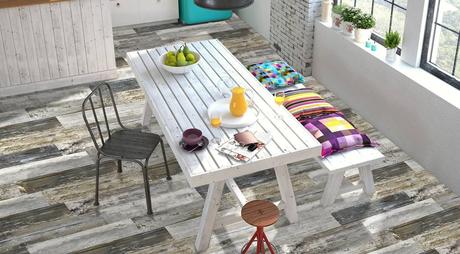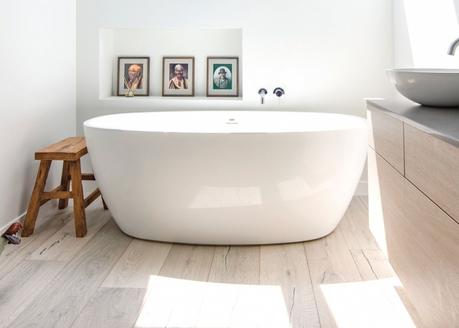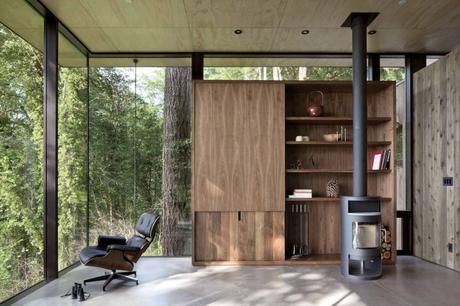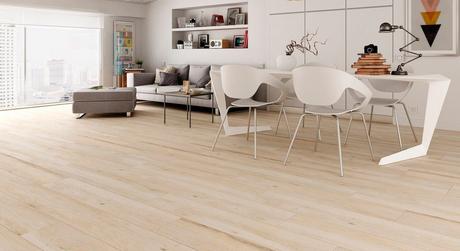
Looking for a more efficient alternative to forced-air heating? Look no further, because Trade Winds Imports has the answer for you: radiant heat! By eliminating duct losses, radiant heat is a more efficient option over other systems. However, that’s not the only pro to having in-floor heat. Read on to find out other benefits!
Radiant heating can be put in any room you want. How nice is that?? I can’t tell you how many times I’ve finished a nice warm shower, just to step out into the cold. Imagine if that no longer had to be the case! Install radiant heating and experience warm feet, all while saving energy!

Advantages of radiant heating
There are a number of advantages to choosing radiant heating over other systems.
Efficient and cost-effective
By eliminating duct losses, radiant heating is more efficient than baseboard heating and usually even more efficient than forced-air heating. Traditional radiators need to be at a temperature of at least 149 degrees Fahrenheit in order to heat up a room effectively, whereas floor heating needs to be at about 84 degrees Fahrenheit. Therefore, radiant heating consumes less energy and keeps the cost down.
Do away with allergies
Those with allergies tend to prefer radiant heat because this system tends to dispense fewer blowing particles than other forced-air systems. Unlike forced air systems that blow air and swirl dust around your home, radiant heat doesn’t blow allergens around. With forced air systems, no matter how often you vacuum, dust kicks back up as soon as you turn the system on. Not the case with radiant heat. For those who suffer from allergies, this is great news!

Source
More living space
Radiant heating allows you to enjoy all of your living space! Unlike radiators that can take up a good bit of wall or floor space, radiant heating allows you to decorate your wall as you wish. Whatever look you are going for, you can achieve without the hassle of a radiator being in your way. If you have a heart for detail and decoration, radiant flooring may be the option for you. Your rooms can now appear brighter and airier!
Safety and Comfort
For starters, regular radiators get in the way! Literally. This can be painful to run into, could have sharp edges or be hot, neither fun stuff. Have you run into those in the dark? Ouch! The good news is you don’t have to worry about that with radiant heating because it’s tucked out of the way. On another note, radiant heating also provides more comfort. That’s due to the fact that the air quality is better and fresher. Regular systems circulate the air in the room causing dust. That’s not something to worry about with radiant heating!
Warmup also lists out a few other benefits such as: effortless to run, works with all floor coverings, and ease of installation. Read their article to get a little more insight into each.
Which Radiant Flooring Is Right for You?
There are two main types of radiant floor heating: electric and water-based (hydronic) systems.

Source
Electric Systems
The main thing that sets electric systems apart from hydronic ones, is that unlike water-based systems, the electric systems do not need a costly boiler, pump, or control system. It is good to note that they are a little more expensive per square foot. This is why you will typically find them in smaller areas such as a kitchen or bathrooms. However, if you take labor costs into consideration, it could be less costly than hydronic systems if installed in larger areas.
Hydronic Systems
If your intention is to heat up the entire house as opposed to just one specific room, hydronic systems are probably your best bet. Water flows through the tubing installed underneath the floors, saving you energy and lowering your utility bills. Uhh, yes please, sign me up! Brian Whitehurst explains that the entire floor is a radiator. This means that the boiler can run at higher efficient low water temperatures than what’s required for hot conventional radiators.
Radiant Heating Floor Coverings
There are a few radiant heating floor coverings to choose from, including:
- Ceramic tile
- Carpeting
- Vinyl
- Wood
- Linoleum sheet goods

Source
Any of the listed coverings are good, but keep in mind that coverings that insulate the floor from the room will decrease the efficiency of the system, according to Energy.gov.
- Ceramic tile is the most common and effective floor covering for radiant floor heating; it conducts heat well and adds thermal storage.
- Carpet is another common one people go with. If you choose this option, be you will need to use a thin carpet with dense padding and install as little carpeting as possible.
- Wood flooring should be laminated as opposed to solid wood, in order to reduce the possibility of the wood shrinking and cracking from the drying effects of the heat.
Cost for Installing Radiant Flooring
So you liked the thought of stepping out of the bathtub onto a warm floor and are now wondering how much money it would take to make this possible. Stephanie Cernivec explains that for warming tile in a bathroom costs between $5-$12 per square foot for electrically heated mats or fixing strips, and the price goes up ($15-$20) for heating cables with the waterproof installation.

Source
You can calculate how much flow heating will cost for your bathroom by using their Radiant Floor Heating Quote Builder. On an average bathroom, you’re looking at somewhere between $175-$420 for a floor-heating system or $525-$700 with the waterproof installation.
Trade Winds Imports hopes you found some of this information helpful and that you have room in your budget to make in-floor heat possible in your home. Stay warm!
